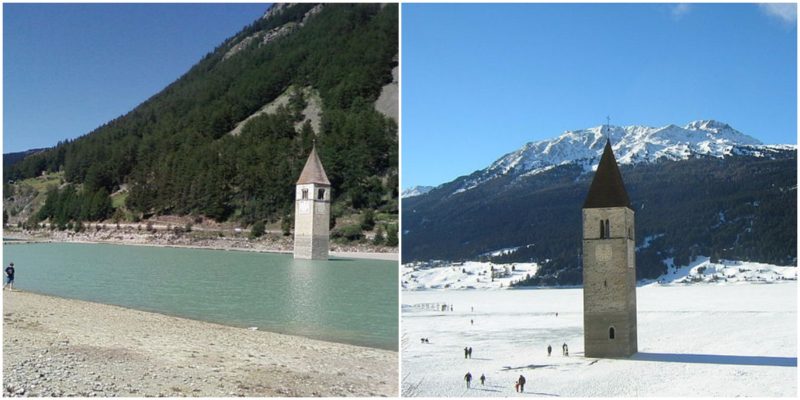The abandoned church tower in the heart of the lonely mountain lake: this is not a classic Hollywood movie or a famous romantic novel. Churches and church bell towers that emerge from the surface of man-made lakes are not a rare image.
There are few artificial lakes on every continent that have “floating” bell towers in their waters. Sometimes, during the construction of dams and artificial lakes in the valleys suitable for such constructions, there are situations when thriving towns and old villages positioned in those valleys must be flooded.
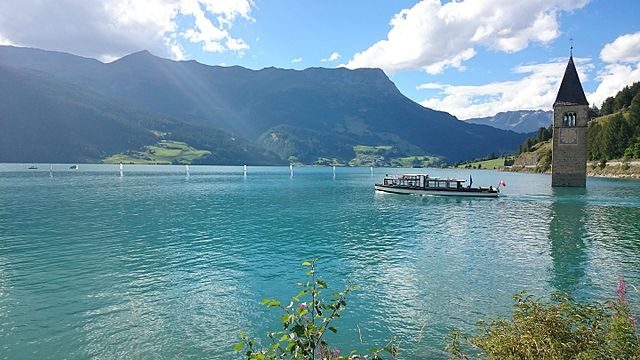
There are entire towns and villages that were deliberately destroyed, and today their remains lie at the bottom of artificial lakes. Under the water, there are streets, houses, and other buildings that were once full of people and now their only “residents” are the fishes. The bell towers of the churches were the highest structures in the old towns, especially in medieval Europe, because as houses of God they were built symbolically to be closer to heaven than any other building in the town. And that’s why they are the only structures of the submerged towns that can be seen on the surface of some artificial lakes.
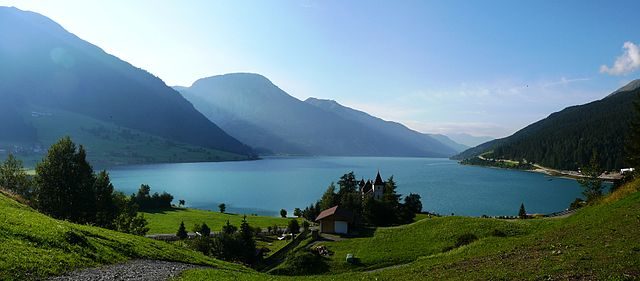
Lake Resia (also known as Lago di Resia on Italian or Reschensee in German) is artificial lake located in northern Italy near the borders of Switzerland and Austria. The lake was formed 60 years ago, although planning for the project began as early as the 1920s. In 1939, one energy company decided to create a giant artificial lake from two neighboring and separate natural lakes. The plan included generating electricity for the region, but also submerging of a few towns and villages. That was the unpleasant reality of the new and progressive age of electricity. The old life in the valley died and a new one was born.
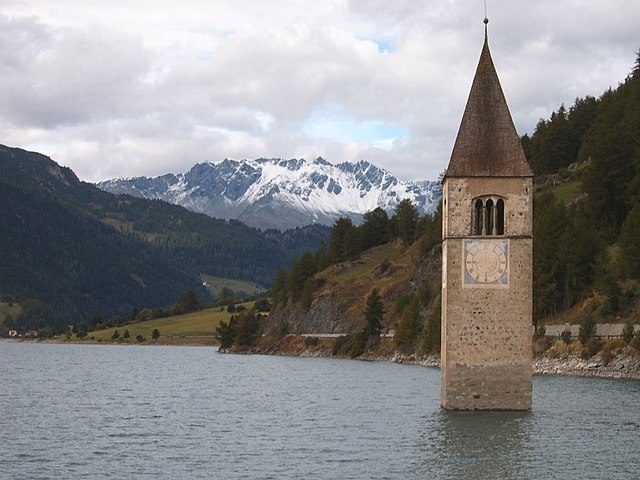
The residents that lived in the valley protested fiercely, but their efforts to stop the project were fruitless. The construction of the dam started in 1940. World War II stopped the construction works for a while and it was finally finished after the war, in July 1950. Thousands of years of history going back to Roman times was lost forever. The entire town of Graun (Curon in Italian), parts of the town of Reschen and the small villages of Arlung, Piz, Gorf, and Stockerhofe disappeared underwater.
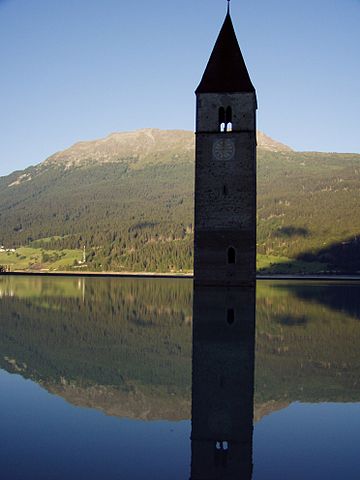
Approximately 1290 acres of developed and fertile land were submerged. More than 163 houses were flooded. Today the upper end of the bell tower that appears on the surface of the green-blue water is the only remainder of the old town of Graun and former life in the valley. The lone Romanesque bell tower was part of an old church from the 14th century, which was also flooded with the rest of the buildings when the water was leveled up to 55 feet.
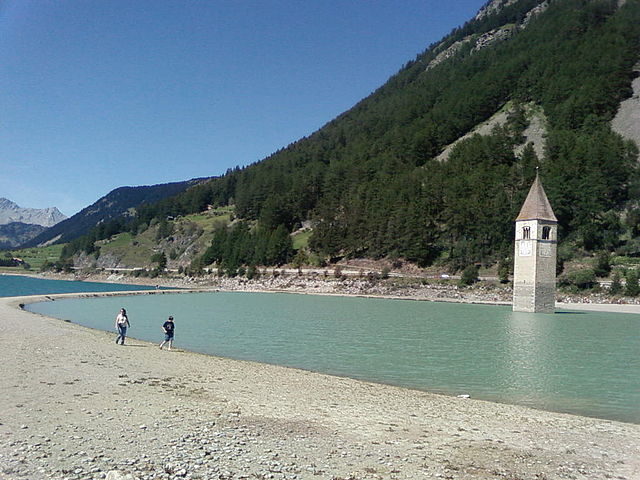
There are many stories and legends about the flooding event, and the lonely bell tower is often the main subject of them. One oral story of the locals about Lake Resia is quite scary. It tells that the church bells sometimes still ring in the deepest and coldest hours of the winter nights. And the fact is that they were removed 60 years ago, a few days before the waters came and drowned the base and the first half of the tower.
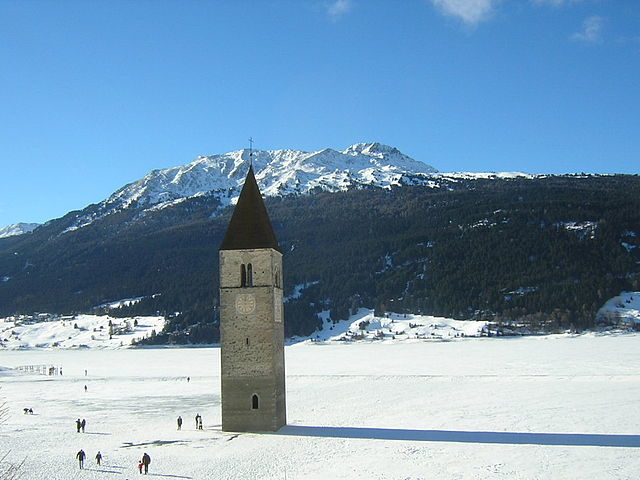
Today Lake Resia is popular tourist destination. Near the lake there are the new towns of Graun and Reshen and their inhabitants proudly keep the memory and the tradition of their old towns.
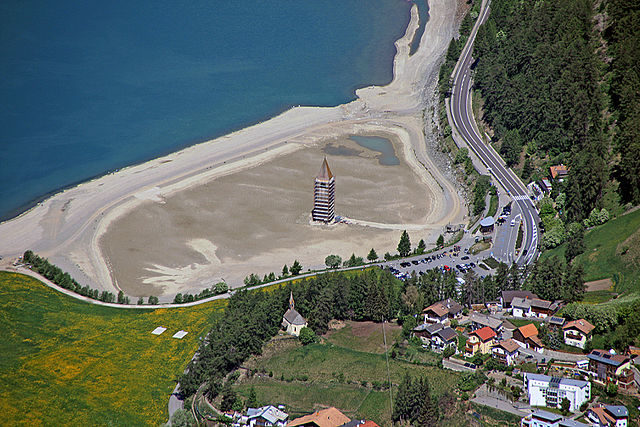
The lake is visited not only for the tower, but also for hiking on the surrounding mountains, fishing, swimming and other water sports, like kite-surfing, because the area is famed for its strong winds. In winter the lake is known as a popular place for those who love ice skating and snow-kiting. In this period of the year, when the lake is frozen, the bell tower can be approached on foot.
